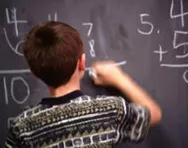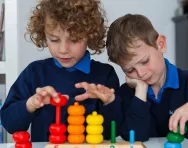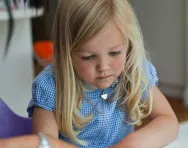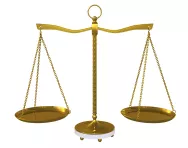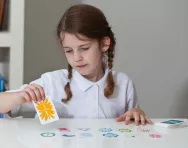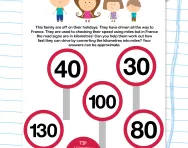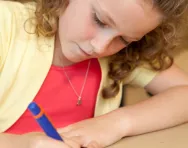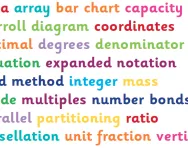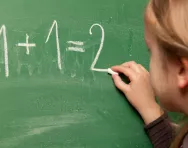Important update from TheSchoolRun
For the past 13 years, TheSchoolRun has been run by a small team of mums working from home, dedicated to providing quality educational resources to primary school parents. Unfortunately, rising supplier costs and falling revenue have made it impossible for us to continue operating, and we’ve had to make the difficult decision to close. The good news: We’ve arranged for another educational provider to take over many of our resources. These will be hosted on a new portal, where the content will be updated and expanded to support your child’s learning.
What this means for subscribers:
- Your subscription is still active, and for now, you can keep using the website as normal — just log in with your usual details to access all our articles and resources*.
- In a few months, all resources will move to the new portal. You’ll continue to have access there until your subscription ends. We’ll send you full details nearer the time.
- As a thank you for your support, we’ll also be sending you 16 primary school eBooks (worth £108.84) to download and keep.
A few changes to be aware of:
- The Learning Journey weekly email has ended, but your child’s plan will still be updated on your dashboard each Monday. Just log in to see the recommended worksheets.
- The 11+ weekly emails have now ended. We sent you all the remaining emails in the series at the end of March — please check your inbox (and spam folder) if you haven’t seen them. You can also follow the full programme here: 11+ Learning Journey.
If you have any questions, please contact us at [email protected]. Thank you for being part of our journey it’s been a privilege to support your family’s learning.
*If you need to reset your password, it will still work as usual. Please check your spam folder if the reset email doesn’t appear in your inbox.
SATs advice: measuring and estimating
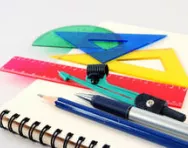
Children will be tested on measures in their Mathematics SATs paper.
- Usually this will involve having to read a measurement on a picture of a measuring cylinder, weighing scales or ruler.
- They may be asked which unit of measurement is appropriate for measuring a certain object (for example, they may be asked whether they should measure the length of a book in kg, litres or cm).
- They may need to solve a problem which involves conversion of units (for example, they may be asked how much heavier 1.2kg is than 800g).
Key Stage 1 measuring and estimating skills
Children will start by measuring objects using 'non-standard' units.
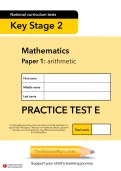
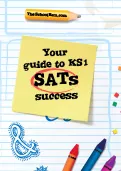
Prepare your child for SATs today
- Your guide to SATs
- KS1 & KS2 SATs revision courses
- SATs practice papers in English & maths
For example:
- To measure the height of a chair they might use their hand span.
- To measure the length of a book they might use interlinking cubes.
- To measure some liquid they might use a small cup, so for example, they might say: 'This jug has 3 cupfuls of water in it, but this jug has 6 cupfuls of water in it.'
- When measuring weight, children are often given a lever balance, which is a basic kind of weighing scales, where an object is put on one side and items used to measure it on the other (this might be blocks or 1p coins).
You can help children with this at home, by getting them to measure various items with non-standard units.
For example, you could ask them to look at three items of furniture in your living room: the sofa, a chair and a table.
- Ask them which one they think is tallest.
- Ask them to write the names of the three items of furniture down and then find an object to measure them with (a piece of card or a book).
- Encourage them to write down how tall each item is next to the name (for example: '3 books tall'). It is important that they get into the habit of recording measurements so that they realise that you need this written record to refer to when talking about what you have found out.
- Ask them which piece of furniture was the shortest and which was the tallest.
You could then move onto estimating. Give them a jug full of water and a small plastic cup. Ask them to estimate how many plastic cupfuls of water they think there are in the jug. Encourage them to pour out the water into the cupfuls (and then out into another container) counting as they go. Ask them to compare the measurement with the estimate and look at how close they were to getting it right.
By Year 2, children will be using standard units for measuring (metres, centimetres, kilograms and litres).
This is a fun activity to help with learning about units of measurement. After you have gone shopping, get them to spread the contents of the shopping bag out onto the table.
- Ask them to sort the pile of shopping into liquids and solids.
- Explain to them that liquids are measured in litres. If you can, show them something that contains one litre of liquid.
- Show them other items full of liquid and ask them if they think they contain more or less than one litre of liquid.
- Now get them to hold something that weighs one kilogram. See if they can work out, by picking up other items, which weigh less than one kilogram and which weigh more.
Measuring and estimating in Key Stage 2
Do some cooking with your child
Simple as it might sound, the very act of cooking involves weighing out amounts, using quantitative judgment to measure other ingredients, and estimating how long certain stages of the process will take. It also involves constant evaluation and analysis of different causes and effects, so that if the end result is not what was expected they can explore the reasons why this may be.
Encourage your child to look at the measurements in the recipe. For each one, you may need to explain that if the measurement is in grams / kilograms it needs to be weighed, if it is in mililitres / litres it needs to be measured using a measuring jug. Get them to look carefully as they measure the items. It is especially important to encourage them to understand unnumbered divisions on measuring jugs and scales as questions testing the ability to read scales which are unnumbered often come up in the SATs.
Practise measurement conversions
Children need to know how to solve problems involving conversion of measurements. Your child should know the following in early KS2:
1 metre = 100cm
1 kilogram = 1000g
1 litre = 1000ml
Find as many opportunities as you can to test them verbally on conversion between units, for example: 'What is 1.2 litres in mililitres?' 'What is 0.9 metres in centimetres?' 'What is 2.54 kilograms in grams?' It is also really important that they know (without having to think!) what a quarter, half and three quarters of a litre, kilogram and metre are.
Take various items out of your store cupboard and give your child some weighing scales. Encourage your child to weigh each item and put them into two groups: 'More than 500g' and 'Less than 500g'. Remind them that 500g is half a kilogram. Ask them if they can find anything that weighs a quarter of a kilogram. Ask them if they know what this measurement would be in grams. Set them various challenges, for example: ask them if they can choose three objects that together weigh less than 1 kilogram.
A KS2 SATs question may ask them how many 50cm lengths of ribbon you can cut from a length of ribbon which is 2.5 metres long. Encourage your child to look at the units of measurement and decide what they need to change. In this case, it would probably be best to change 2.5 metres to 250cm. Some children may work out immediately that they need to use this number sentence: 250 ÷ 50 to work out the problem; others may need to draw pictures to help them (for example: they could draw a few lengths of ribbon and label each one '50cm' then count up in 50s until they get to 250).
